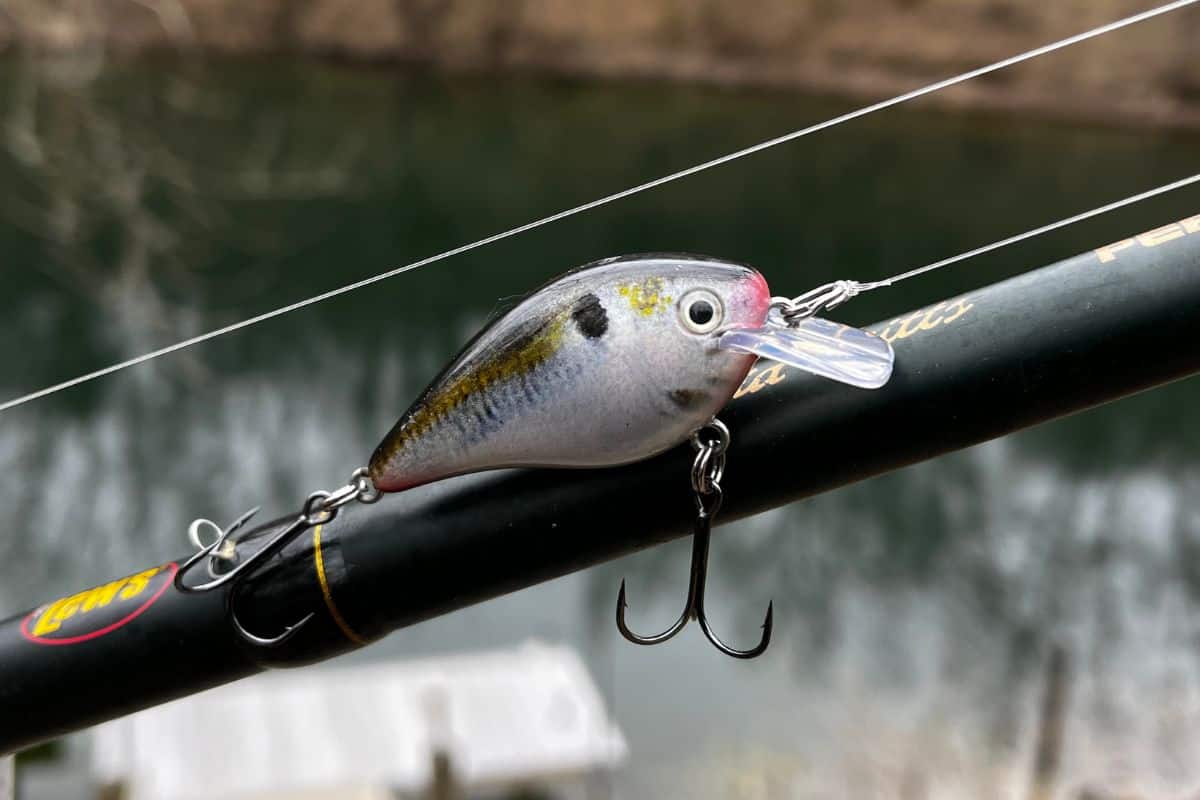Ponds are everywhere and most anglers can find one to fish. There are a few lures that really shine on these tiny waters.
Pond bass fishing is often done from the shoreline. Lures like hollow-body frogs, topwaters, tiny crankbaits, wacky rigs, and a Texas-rigged soft plastic will maximize catches while minimizing hang-ups.
We’ll break down each of these presentations and why these are perfect for fishing small ponds for bass.
The Unique Aspects of Pond Fishing
Approaching a small pond is very different from planning for a week checking out a 50,000-acre reservoir. Less time is needed to locate the bass and more effort is put into efficiency.
Ponds are also most often accessed from the shoreline. Veteran bank anglers know that getting stuck is a constant problem. Bank fishing also means the lures and retrieves are working from deep water to shallow instead of what anglers experience when fishing from a boat.
This different approach, from deep-to-shallow, is a huge benefit for pond anglers from the shore. Bass naturally pin baitfish against the shoreline. The pond bed, the surface of the water, and the bank create a trap for panfish and minnows that bass take advantage of.

Finding lures that can stay free of hang-ups as well as imitate this natural feeding strategy can unlock a pond bass fishing bonanza.
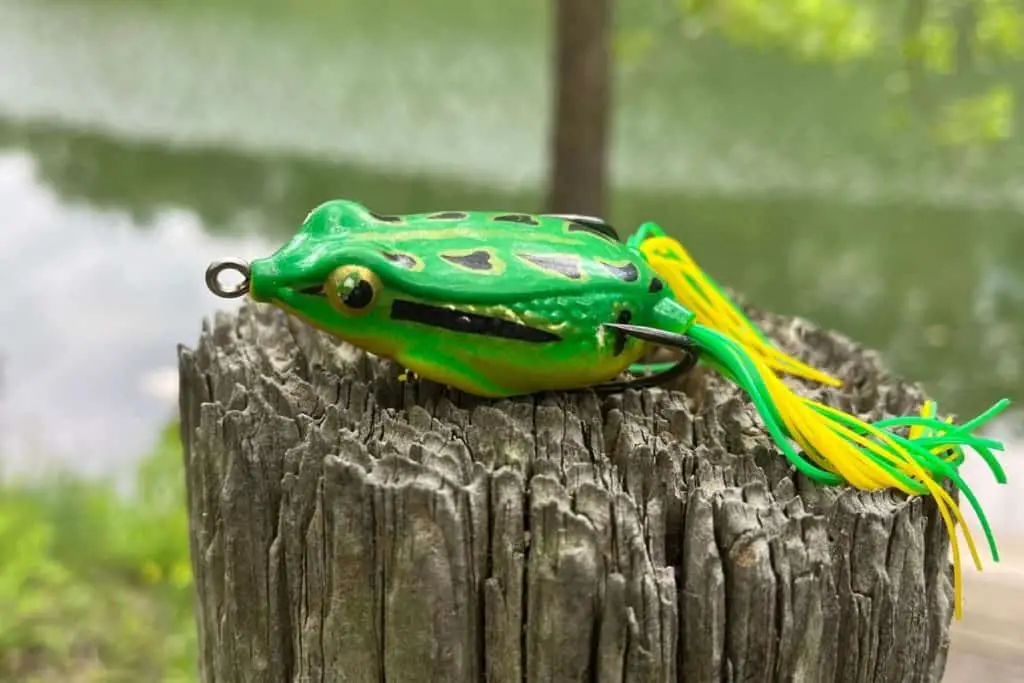
Hollow-Body Frogs and Pond Fishing
This may be my favorite pond fishing lure. The first thing anglers need to do is eliminate the stereotypical scenario for frog fishing.
When hollow-body frogs are first mentioned, most anglers envision emergent vegetation like lily pads, duckweed, or other slop. Yes, these are all perfect frog fishing situations, but approaching a frog this way limits its potential.
A hollow-body frog is effective in open water, along laydowns, skipped under docks, or worked along rip-rap shorelines.
The beauty of this lure is it is as close to completely snag-free as an angler can get. Even when whipped into the gnarliest places, like brush and thick vegetation, it almost always pulls free.
It can also be skipped with ease on both spinning and baitcast equipment.
Three color choices will cover most fishing situations. I like to keep a natural frog pattern with me as well as white and black. I prefer to use black on sunny days and white on overcast days or when the water has less visibility.
You may be wondering why black on sunny days? Great question.
The lure is sitting on top of the water and backlit by the sun. The resulting silhouette, no matter what color the lure, looks black. A solid black frog on sunny days creates a defined profile for the bass to target.
I like white in low-visibility conditions because it is easily seen. I know this goes against traditional thinking, but when filming various lure colors underwater, white is by far more visible than black.
(Here is the article on the best lure colors for dirty water.)

Topwaters for Pond Fishing
Yes, the above-mentioned frog is a topwater, but it really is in a class all its own because of the extreme snag-proof characteristic.
This section breaks down more traditional topwaters and where they excel when fishing ponds.
I like to classify topwaters into two approaches, searching and target lures. A searching topwater is something like a buzzbait or walking bait. These lures are constantly moving and do an excellent job of revealing where bass are hiding in a pond.
A popper is a perfect example of a target topwater. Poppers can be worked tight along cover and anglers can leave them sit to entice bass into striking. Perfect popper presentations might work along a laydown or dock. These little topwaters can also be retrieved at a wide range of speeds and intensity making them a perfect pond fishing tool.
Poppers with a solid white belly are terrific choices and adding a feather to the back treble will help draw strikes while the lure is sitting.
(Here is a complete guide to topwater lure selection.)
Another Factor to Consider for Topwater Pond Fishing
Ponds are often susceptible to debris floating on the water’s surface. This could be leaves, pine needles, or emergent vegetation.
This is where buzzbaits can outfish other topwater lures. The hook on a buzzbait is turned upward and doesn’t snag all the debris as it comes over it. A topwater sporting treble hooks will foul up with the smallest leaves.

The most important thing to remember when buzzbait fishing with debris is to engage the lure immediately. This will keep it from sinking below the water’s surface and snagging the clutter you are attempting to avoid. It takes a little practice but it will make a buzzbait one of your favorite pond lures.
(Here is an article on buzzbaits and why they catch so many bass.)
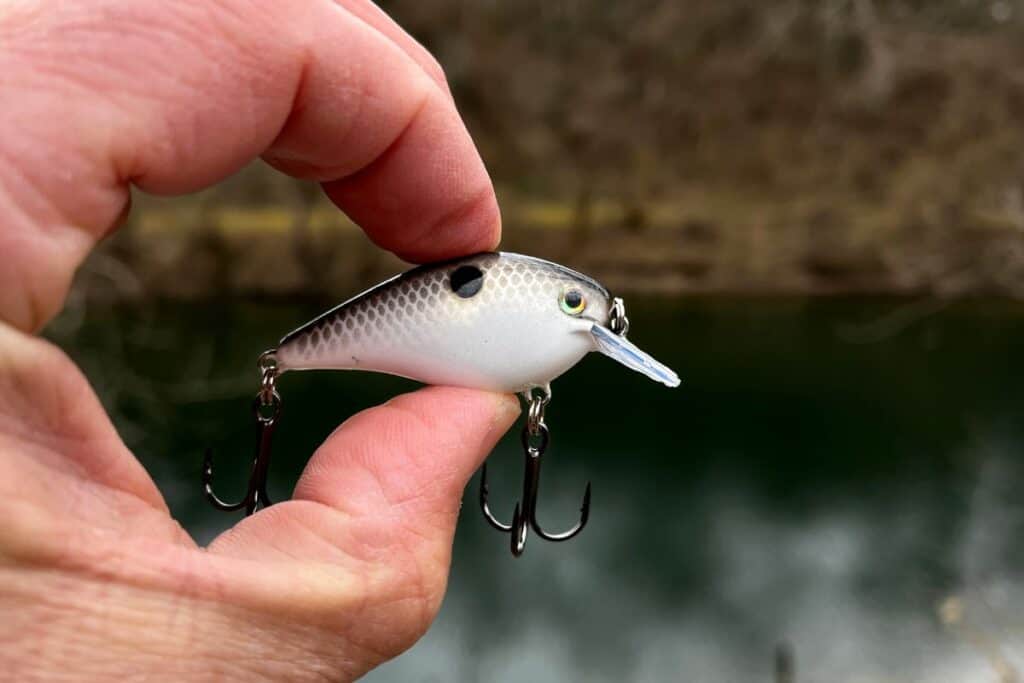
Tiny Crankbaits for Pond Fishing
Many ponds are shallow and shore anglers are always dealing with upward sloping structure.
Tiny crankbaits handle these criteria with ease.
Crankbaits are also dynamite lures to walk the shoreline and search where the bass are positioned at any given time. Having search baits is a key component to pond fishing success. Although most ponds are not huge, covering water to locate bass can still take a little time and crankbaits excel at this.
Most diminutive crankbaits are squarebills. These are best retrieved in open water with a burning presentation where anglers reel them as fast as possible with a start-stop erratic motion. This draws reaction strikes from bass that are lethargic and not wanting to feed.
When pond anglers run across shoreline cover like wood and rocks, the squarebill can be slowed down and bumped into it. The deflection and sudden change of direction will also draw reaction strikes from the bass.
Tiny crankbaits are powerful pond lures and I prefer to use models that mimic minnows or panfish colors.
(This is an article about using tiny crankbaits and where they excel.)
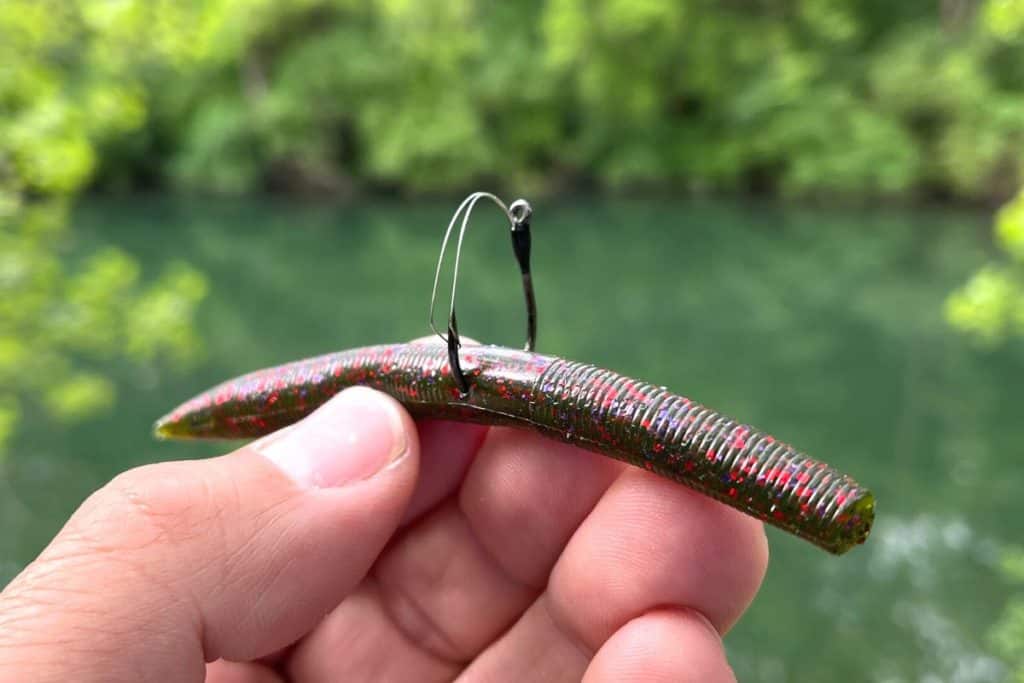
Wacky Rigs for Pond Fishing
Once an angler has located bass or believes he or she is in a high-percentage location, a wacky-rigged stickbait can target specific areas with minimal hang-ups.
A wacky rig is a tremendous pond fishing lure and presentation for any type of cover or structure an angler runs across.
The slow sink and subtle shimmy can pull bass from around wood, rock, weeds, and docks. Pond anglers can easily carry hooks both with and without weed guards to maximize efficiency around cover.
A wacky rig’s horizontally aligned fall also keeps it free from settling into most cracks and crevices that can lodge other lures. For shore anglers, this is a win-win.
Repeated underwater filming has shown me that the traditional 5” stickbait has the most natural shimmy whether rigged weightless or weighted. A variety of colors work well and shore anglers can easily pack a few varieties without taking up too much space in their tackle bag.
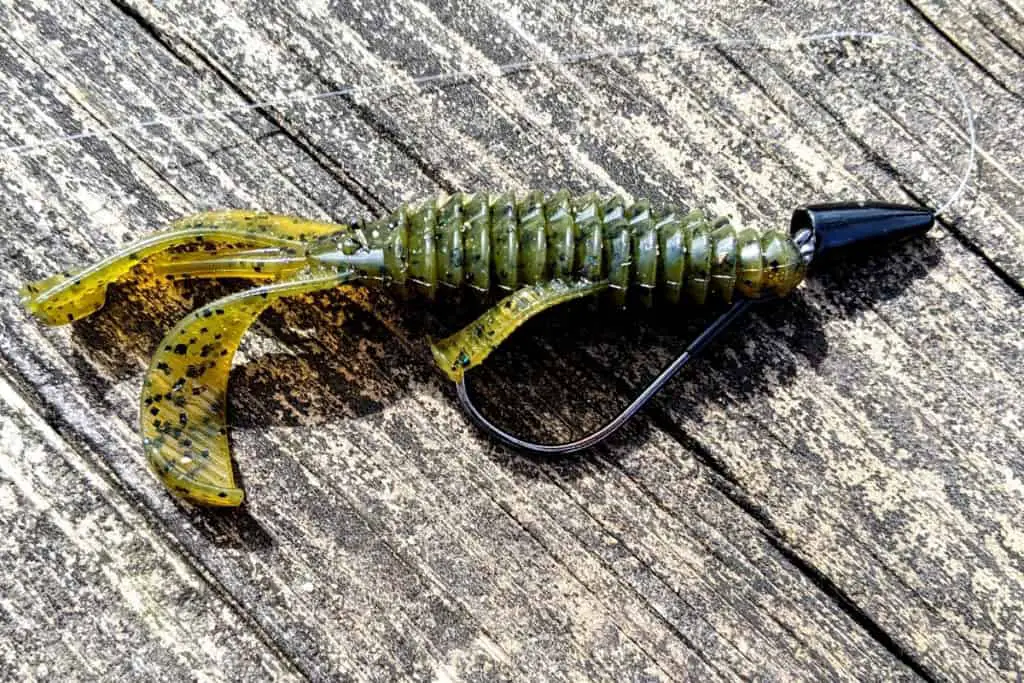
Pond Fishing With Texas Rigs
The Texas-rig has been a staple in bass fishing for many decades. This simple and powerful rigging method makes it perfect for pond fishing.
Depending on the soft plastic selected, the lure can cover water horizontally and find bass or it can be dropped into specific locations to target fish in a tiny area.
For most pond fishing situations, I like to use worm weights that are smaller in size to reduce hang-ups. Start with a ¼ oz and then adjust from there. If you find that the ¼ oz weight is getting stuck, try downsizing to ⅛ oz or 1/16 oz versions.
The most versatile Texas-rigged soft plastic is probably the old-school worm. Bass anglers can swim a worm, crawl it on the bottom, let it drop into thick cover, or even pull it across emergent vegetation.
The massive range of plastics available allows anglers the ability to fish small finesse offerings, craws, creature baits, and even monster-sized worms for really big bass. Like the other lures on this list, Texas-rigs work equally well on spinning or baitcast equipment.
(Here is an article on everything you need to know about Texas Rigs.)
While there are other lures and presentations that will of course do well in pond fishing situations, these above-mentioned stand out for their ease of use and ability to avoid getting stuck.
Good luck out there and be sure to encourage someone today. You never know how you may change their life forever.
Isaiah 6:8

